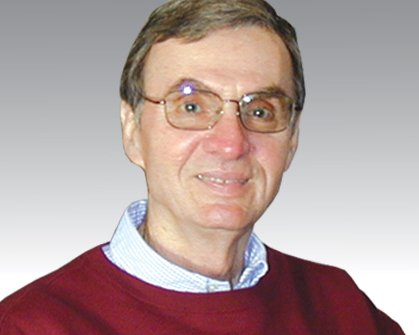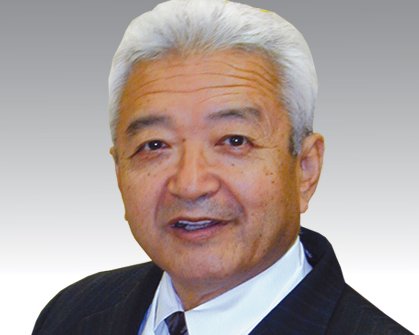

岡崎道弘, D.C.
岡崎カイロプラクティック代表
2004年の開院以来、我々サンディエガンの健康ライフをサポートしている「岡崎カイロプラクティック」が、2024年3月、20周年を迎えました。代表の岡崎道弘先生にお話を伺いました。

ガルシア繁子
「フォーシーズン俳句クラス」主宰者 / 表千家茶道教授
日本文化が凝縮された俳句をアメリカでも学び、楽しみ、広めていきたいーとの熱い思いで、カリフォルニア州サンディエゴ市で「フォーシーズン俳句クラス」が結成されて50年の節目を迎えた。
















岩本 光弘
元筑波大学付属盲学校・鍼灸手技療法科教諭
元日本視覚障害者セーリング協会理事
視覚障害者と健常者の混成チームが競うヨットレース
「見えない者」と「見える者」の共生、理想社会の縮図がそこにある
本文を読む










高橋 シーバソン 優子
国際トラベル代表取締役社長
「サンディエゴに元気な日系シニアヴィレッジを作る会」代表
日系人が安心して暮らせるシニアホームの建設を夢見て・・・
America's Finest City、サンディエゴで充実したセカンドライフを!







佐々木 達夫 サンディエゴ・シンフォニー / 首席ティンパニスト
佐々木 成子 サンディエゴ・シンフォニー / バイオリニスト
人生は二人が奏でるシンフォニー
天賦の才に恵まれた音楽家夫妻の半生記





軌保 博光 (のりやす・ひろみつ) 改め 「てんつくマン
元吉本興業 お笑い芸人 / 映画監督 / 路上詩人
どんなに愛する人がいても、地球を救えなければその愛は届かない
希望と笑顔に満ちたパラダイスを我らに・・「てんつくマン」参上!

スティーブ・オキノ
ドキュメンタリー映画『A Most Unlikely Hero』監督・製作・脚本
人種差別をめぐり、軍を相手に困難な法廷闘争を支援
アメリカが保障する自由を求め真の愛国心を問う記録映画


テリー・ケネディ
ゴールデン・ベースボール・リーグ / サンディエゴ・サーフドウグス 監督
メジャーでの実績を残して 13 年目の覚醒 ・・・野球に恩返しを
新リーグの発展とチームの育成に身を捧げる決意


ジョン "マック" マクラフリン
サンディエゴ航空母艦博物館 館長・最高責任者
"ミッドウェイ・マジック" の呼称で米国民に慕われた47年間
歴史を伝える新たな使命を担い、海上博物館として蘇る



クリス・タシマ
俳優 / 映画製作者 / シーダー・グローブ・プロダクションズ設立者
初作品『ビザと美徳』でアカデミー賞の栄誉に
アジア系アメリカ人の歴史の語り部として使命と重責に意欲を燃やす






寺口 昌利
Terra Hair Design オーナー / ヘア・アーティスト・ディレクター
最先端を行く日本の美容技術、トップヘアスタイリストの矜持
後進の夢を育む Terra Academy をラホヤに開設


関戸 順子
カイロプラクター / 鍼灸漢方医 / 自然学医 / メリディアン自然医療学院長
カリフォルニアで草分け的存在の日本人女性カイロプラクター
医は仁術・・・医療関係者に求められる「思い遣りの精神」

高橋 晃
サンディエゴ大学 日本語教師 / ジャパニーズ・ランゲッジ・クラス 主宰
モンゴル奨学基金 創設者
モンゴル新設高校での無償指導、教師と生徒が希望で繋がる夏の1カ月
日本語教育の情熱はアメリカを越えて・・・夢を抱く若者達との交流







ロバート・"シタ"・ウェルチ・ジュニア
ビエハス・エンタープライズ / トライバル事業・営業開発 副統括
先住民クミアイ族の誇りと歴史を語り継ぐ
成功を約束したカジノ建設、報恩と部族の更なる発展を願う日々


デヴィッド・グランザー
サンディエゴ・コミック=コン・インターナショナル
マーケティング・広報ディレクター
米国でのアニメ人気が急上昇、成長を続けるサンディエゴ恒例の Comic-Con
映画やマンガへの情熱を通してコミックアートを人々に伝える

鈴木 功二
教育学博士 / 英語読み上げ算教育協会 会長
NPO特定非営利活動法人・国際文化交流協会 理事長
珠算教育39年、創造性を伸ばす右脳開発に貢献
国際普及への情熱を燃やし続ける "Mr. SOROBAN"


ティム・マーフィー
エリート・レーシング 会長 & 創設者
スズキ・ロックンロール・マラソン 主宰者
音楽とミックスした Rock 'n' Roll Marathon の誕生
走ることへの情熱がサンディエゴ初のマラソン大会開催を実現<

ダレル・"マウス"・デイヴィス
アリーナ・フットボール・リーグ2 サンディエゴ・リップタイド監督
ワイドレシーバー4人、常識を覆す独自の攻撃スタイルを創造
新リーグ誕生に尽力した室内フットボールの革新者



アレキサンダー・チュアン博士
サンディエゴ中国歴史博物館館長
日本占領時代~終戦~中国共産革命を体験して台湾、そしてアメリカへ
5,000年の悠久の歳月を重ねし文化を継承しつつ、中国系移民140年の歴史を語る





マキ 宮原 広幸
パサデナ文化剣道道場師範 / バレー剣道道場師範
米国剣道連盟理事 / 南加剣道連盟理事
築地警察署で聞いた竹刀の音に、忘れていた剣道の思いが蘇り・・・
米人で最高段位を極めた元日系兵士の武道人生


テッド・ジャーディン
サンディエゴ・ビジター・インフォメーションセンター代表取締役社長兼 CEO
ミッションベイを望むサンディエゴ・ビジター・センター誕生秘話
アイオワ州デモインのキオスク建設からヒントを得た情報ビジネス

福田 光代
サンディエゴ日本学園園長 / チュラビスタ市公立高校日本語教諭
メキシコ・バハカリフォルニア州立大学日本語講師
日本人学校のパイオニア・・・無我夢中で駆け抜けた教師人生
私にできるアメリカへの恩返し・・・精一杯日本語を教え続けること


森本 昌義
ベネッセコーポレーション 代表取締役社長 兼 COO (最高執行責任者)
ソニー・マニュファクチュアリング・カンパニー・オブ・アメリカ 元社長
サンディエゴ、ブラジル・・・25年に及ぶ海外駐在生活
国際ビジネス戦略の最前線を歩み続けた人生

曽 碧光
米国中医薬研究所所長 / Tsung Corporation 代表取締役
満州事変、日中戦争、太平洋戦争、228事件、動乱の中で過ごした少年時代
自由を求めて母国台湾を後にした青雲の志、漢方医学との運命的な出会い





鈴木 啓之
ミッション・バラバ 伝道者 / シロアムキリスト教会牧師
プリズン・フェローシップ・ジャパン理事長
大統領臨席の朝餐会で3,000人を前にスピーチ
極道の世界から蘇生した "イレズミ牧師" の足跡






オミッド・ナマーズ
全米女子プロサッカーリーグ (WUSA) サンディエゴ・スピリット監督
敗北を恐れる戦いに勝機なし!
チームを栄光に導く強靱な精神と肉体
本文を読む







トム・ウイルソン
サンディエゴ・センチュリー・クラブ・ビューイック・インビテーショナル運営委員会代表取締役
キャンプ・キャランからビューイック・インビテーショナルへ
世界の名選手を魅了する荘厳なトーリ・パインズGC・・サンディエゴの至宝の一つ



シスター・ヘレン・マックヒュー
元サンディエゴ大学英語学科主任聖心修道会メンバー
サンディエゴから日本へ・・・召命に従い1年の研究休暇を越えて
聖心の教え子の中に皇后様の姿も・・・忘れ得ぬ出会いの数々


ドナルド・G・リンドバーグ
サンディエゴ動物学会種保全科学部門副主任 / ジャイアントパンダ保護飼育所長
「中国より愛をこめて』・・人気沸騰、正真正銘の "パンダモニアム"
サンディエゴで最大のアイドル、ジャイアントパンダの生態を苦闘の末に解明

キム・イルドン (金一東)
医師 / 内科・小児科専門医全科・プライマリケア医
日本クリニック・サンディエゴ院長
高校5年、運転手4年・・・流浪の末に歩んだ医師への道
日本とアメリカの医療界の架け橋を目指して

リオ・リヤウ
世界台湾人商工会議所会頭同共同創設者 / ファースト・ユナイテッド銀行共同創業
海外取引のエキスパート、銀行員、CA州アジア経済開発委員会メンバー
世界を繋ぎ、サンディエゴの活性化を進める革新的国際ビジネスマン

トム・カーマイアー
アズテックス・ディフェンシブコーディネーター
サンディエゴ州立大学・フットボールコーチ
元 NFL プレイヤー・・・日本のプロチームで監督も経験
故郷のサンディエゴに舞い戻り、アズテックスの躍進を夢見る




